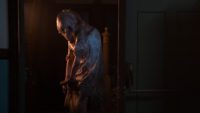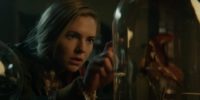Every episode of Behind the Monsters so far begins with the origins of the spotlighted monster. That’s a little complicated when it comes to the Friday the 13th franchise. While, of course, Jason Voorhees is the hockey-masked face of the franchise, he wasn’t the “monster behind” the first film’s killings, and the hockey mask didn’t even show up until partway through Friday the 13th: Part III (1982). While other monsters may spring from common phobias, deep-seated fears, news stories, or a myriad of other sources, Jason, and Friday the 13th at large, happened by making it up as the franchise went along. And fans camped out at each new site, eager for more.
After the intro, Anya Stanley opens by noting how the longstanding Production Code dictating what could or could not be depicted in film ended in the 1970s, opening the door for more than ever before to be talked about and shown on film. Peter Bracke then recounts the tale of how Sean S. Cunningham, director and producer of Friday the 13th (1980), saw Halloween (1978) in theaters, and told the first Friday’s eventual screenwriter, Victor Miller, to see it, and write a film that essentially copied it.
And thus, Friday the 13th was born. Jason Voorhees, on the other hand, needed more time to grow, and he’d grow up, both literally and metaphorically, on the big screen for all to see.
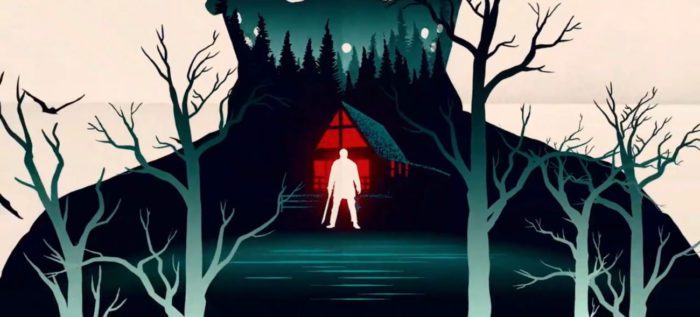
During the segment about the first film, we get introduced to Ari Lehman, who played the child version of Jason Voorhees shown in it. Despite being in only one Friday film and doing so at age 13, Lehman has an enthusiasm and deep love and knowledge of the franchise that would rival any fan who’s never stepped foot on a Friday the 13th set. He offers great insight from an inside as well as an outside perspective throughout the episode.
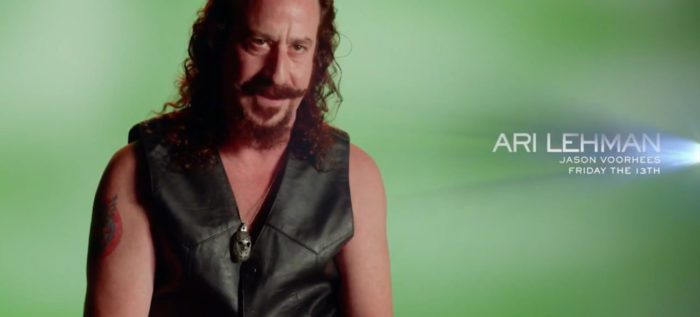
Also in this segment, Peter Bracke, writer of the book Crystal Lake Memories: The Complete History of Friday the 13th, discusses how Pamela Voorhees was the intended focus of the first film. Jason only became the franchise’s killer when the first film unexpectedly made so much money that Paramount ordered a second, and the filmmakers had to figure out a way to have a killer for the sequel now that Mrs. Voorhees was headless.
It’s this transition from Friday the 13th to Friday the 13th: Part II (1981) that firmly establishes one of the running themes of this episode: ironically enough, that Friday the 13th doesn’t have too many running themes. There was never a grand plan for the film series’ characters or story as a whole; filmmakers were never certain if a sequel would follow their film and were often dealing with various elements that required quick decisions to be made, including implementing the famous hockey mask for the very first time, and many directors, crew members, and actors set out to make their mark on the franchise by making their entry unique. Thus, each film feels unique, but also similar, which Rebekah McKendry, the co-director and co-writer of All the Creatures Were Stirring, points out.
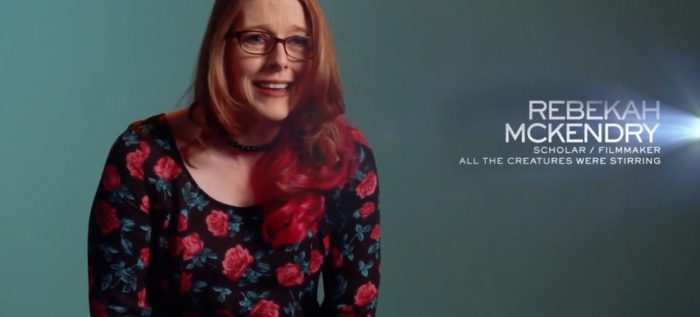
One element of the films that demonstrates this most clearly is the kills they depict. Every Friday the 13th film features unique, gory, and memorable kills. In fact, the films focus a lot of their story and energy on the kills, so much so that interviewees in this episode admit it’s a huge draw for them to watch the films, rather than wanting the deeper story or characters that other horror films offer. Multiple interviewees even discuss how Jason himself, unlike someone like Chucky or Freddy Krueger, in general, doesn’t have much personality to him. He doesn’t talk. He doesn’t enjoy killing or relish it in any way. His concept is simple, but that’s what makes it fun for his many legions of fans. It’s easy to project a different personality onto him to coordinate with each film’s unique identity without feeling like the character’s being compromised. It’s easy to root for him against the other characters who are just there to be killed. It’s easy to have fun watching the brutal kills and look forward to the next one.
Derek Mears, who played Jason Voorhees in Friday the 13th (2009), and who also gives great enthusiasm and insight throughout the episode, reflects on Jason’s kills throughout the franchise by observing, “Jason’s basically the MacGyver of murder.” Jason’s known for his machete, but he can and will kill people in whatever way is convenient for him. Not being sure how each character will die and waiting for the ante to be raised for each kill adds to this excitement of watching the films. Kane Hodder agrees that anyone can kill with a weapon, but Jason can kill with anything.
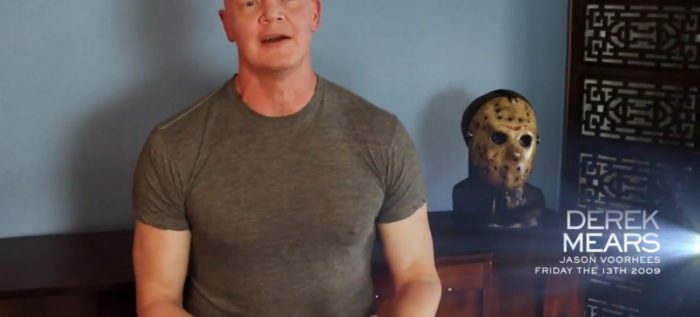
Almost every Friday film gets the spotlight for a segment, and for each entry, different interviewees pop in to excitedly gush about why it’s their favorite one. Although, when the episode reaches Friday the 13th VII: The New Blood (1988), these discussions are shorter until we reach Jason X (2002). However, during this section, we do get to hear from Kane Hodder and others about Hodder’s taking over of the role, his love of Jason that dates back to long before he even auditioned for the role, and his approach to the role to make the character, in his words, “more interesting.”
It was great to hear from so many of the actors who’ve played Jason Voorhees and many of the directors behind the Friday films. It would’ve been interesting to hear from other actors from the various films, though it’s understandable that some may not have been available for interviews, and the episode’s already bursting with interviewees, from those directly involved with the films, to fans, to people like Kane Hodder and Ari Lehman, who are both.
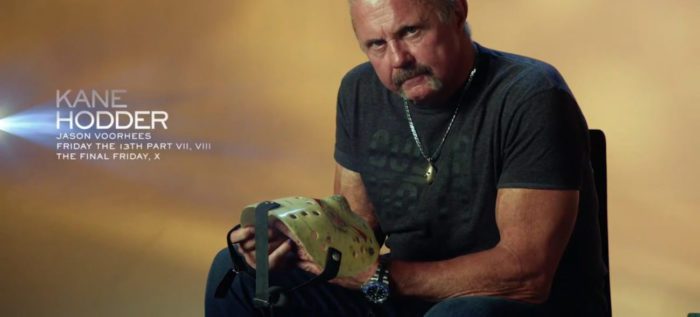
After discussing the 2009 reboot film, the conversation moves to what’s been happening in the Friday the 13th franchise, both officially and unofficially, while fans wait for another official film. One of the elements that sets this episode of Behind the Monsters apart from the other episodes is that, when it gets to the state of the Friday franchise in 2021, the discussion of what fans are doing to keep the franchise alive goes much deeper (and we get a glimpse into the copyright limbo that’s made it so difficult to make new Friday the 13th films despite Jason Voorhees’ enduring popularity and marketability), and the episode not only addresses the COVID-19 pandemic but manages to provide a story of hope and levity.
In the absence of new films for the indefinite future, fans have taken it upon themselves to create their own. Bracke marvels at them and even remarks that some of them have budgets in the hundreds of thousands of dollars: quite a feat for films made incorporating copyrighted material (though whose copyright that is is up in the air). Blairstown, the New Jersey town in which the first movie was filmed, has embraced its ties to the franchise in recent years.
Tom Savini, who was the makeup and special effects artist (including designing the look of Jason as a child) for Friday the 13th and Friday the 13th: The Final Chapter, recounts how special effects makeup artist Jason Baker came up with the idea to make custom face masks in the shape of Jason’s hockey mask. Savini estimated maybe making up to five masks. At the time of his interview, the team, which consists of everyone from former students to film crewmembers who find themselves out of work during the COVID-19 pandemic.
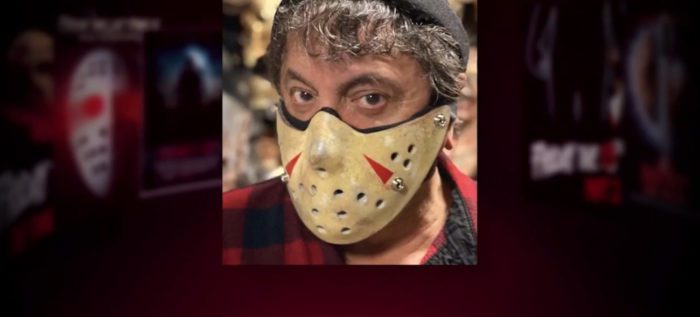
Friday the 13th fans are excited and chomping at the bit for more Jason content, and while playing the official video game (which also gets a segment in this episode) and rewatching the movies over and over again may satisfy them for a bit, they eventually take that excitement and turn it into something new inspired by their beloved franchise.
Complex narratives and characters can be supremely rewarding for both creators and audiences, always finding new elements buried just under the layer they’ve already discovered. But narratives and characters that are simpler can be just as rewarding, as they offer potential and the chance for variety. Is Jason Voorhees killing to take revenge for letting him drown, to avenge his mother, or just because you’re on his turf? It depends on the film, and none of these would be out of character for Jason. It’s what each creator and each viewer brings to Jason that leaves him drowning in fans.

